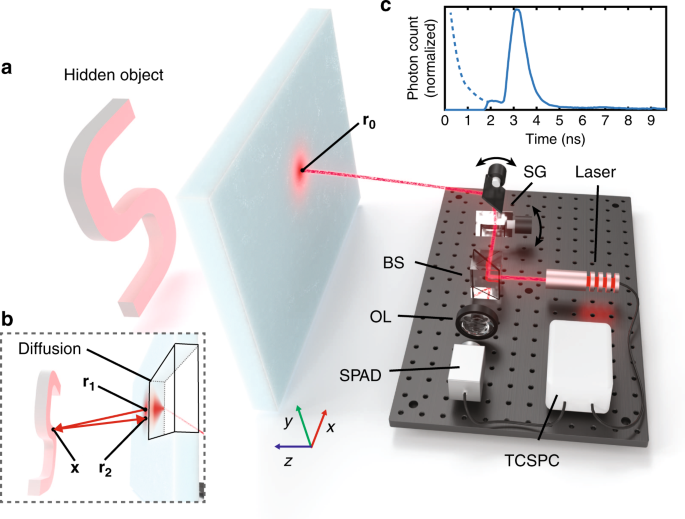
Even in an autonomous vehicle that uses advanced cameras and sensors that can see the entire surrounding area, driving in dense fog is not an easy task. It can pass through fog, but photons are polarized and refracted in thick fog, making it difficult for the human eye to properly understand. The imaging device developed by Stanford University’s research team, which was released in the journal Nature Communications, is said to function like a laser-powered lidar scanner used by autonomous vehicles to grasp a three-dimensional world.
In this structure, a powerful laser scans the obstacles back and forth, and a high-sensitivity photon detector passes through the fog, recording the hidden object on the other side and reflecting back. According to an algorithm developed by the researcher, it is possible to consider a location suitable for the sensor and detector, including scattered photons.
This algorithm can create a 3D representation of an object hidden behind an obstacle even though there is little information to be processed compared to the data processed by the autonomous vehicle lidar system per second. It is something that can be expected with considerable accuracy even in situations that no one knows from the human eye.
However, this technology is not immediately applicable to cars on the road. There is room for speed improvement right now. User-defined algorithms can process the data and generate 3D representations of hidden objects in real time, but the scanning process would take from one minute to an hour depending on the hidden objects. The test also said that the self-driving car only scanned part of the time it needed to move safely even in fog conditions.
On the other hand, there are many fields to which this technology can be applied. For example, through accurate and detailed medical images, doctors know the information inside the body without surgery, and in the future, spacecrafts will be equipped with technology-based imaging devices to see through distant planets atmospheric clouds and other particles without actually landing on the ground. You can expect utilization. Related information can be found here .


